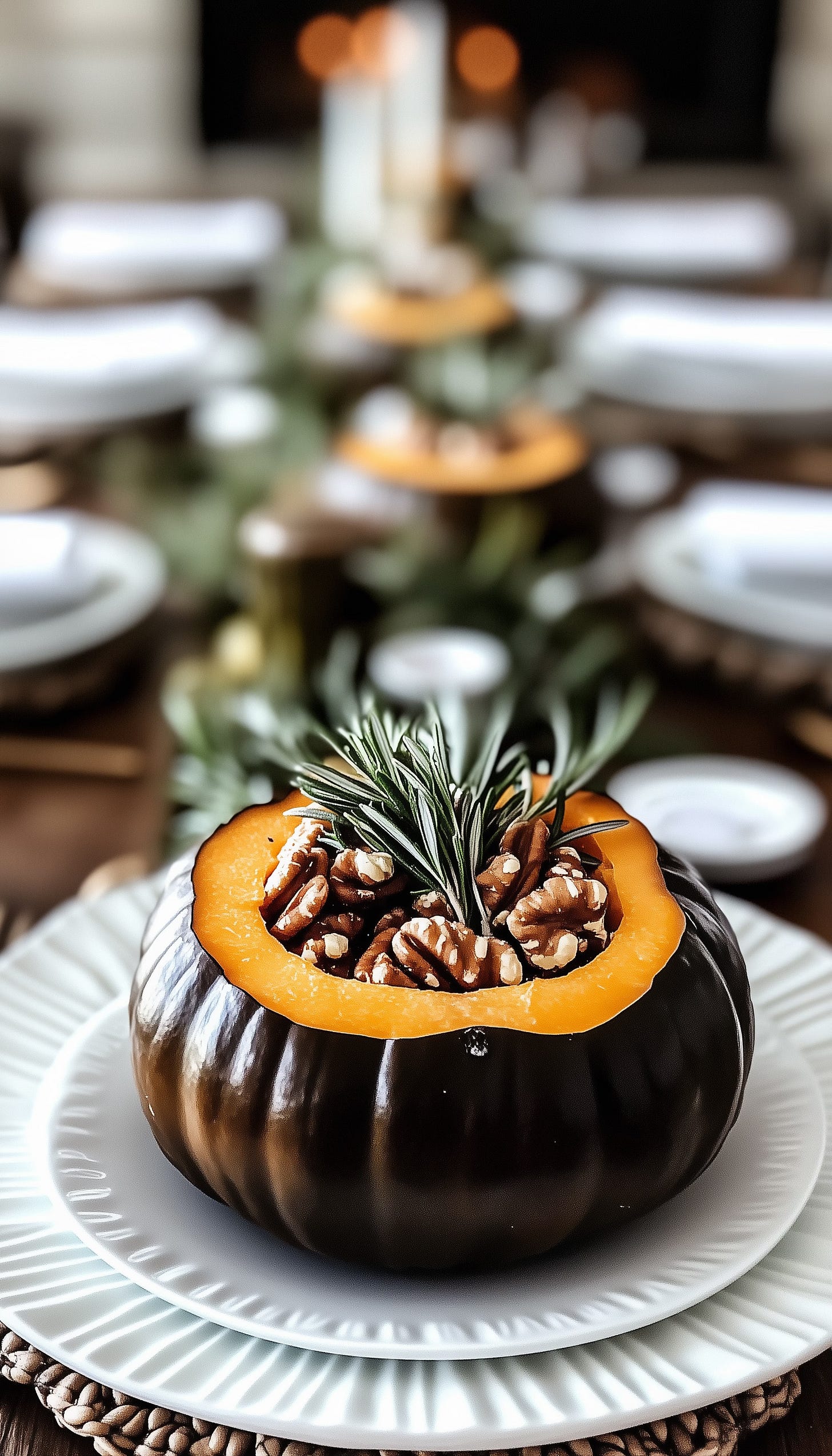Acorn squash is a fall favorite that brings warmth and flavor to seasonal dishes. This nutrient-rich winter squash is not only delicious but also packed with health benefits. From its vibrant orange flesh to its versatile culinary uses, acorn squash deserves a spot on your plate this season. Let’s explore its benefits, cultural and historical significance, and even a surprising conspiracy theory, followed by a mouthwatering recipe for roasted acorn squash with brown sugar.
5 Health Benefits of Acorn Squash
Rich in Nutrients: Acorn squash is a powerhouse of essential vitamins and minerals, including vitamin C, potassium, and magnesium. It also contains beta-carotene, which supports eye health and boosts the immune system.
Supports Digestive Health: With its high fiber content, acorn squash aids in digestion, and promotes gut health. A single cup provides about 9 grams of dietary fiber.
Heart Health: The potassium in acorn squash helps regulate blood pressure, while its antioxidants combat inflammation and reduce the risk of heart disease.
Boosts Immunity: Packed with vitamin C, acorn squash supports the immune system, making it an excellent choice during flu season.
Weight Management: Despite its sweet taste, acorn squash is low in calories and fat, making it a guilt-free addition to your meals that keeps you feeling full longer.
Cultural and Historical Significance
Acorn squash has a deep history in North and Central America, where it was a staple crop for Indigenous peoples. It belongs to the Cucurbita genus and was one of the "Three Sisters" (corn, beans, and squash) grown together in symbiotic planting systems. Indigenous communities valued squash for its long shelf life, making it a crucial winter food source.
The Pilgrims learned about squash cultivation from Native Americans, and it quickly became a Thanksgiving staple. Today, acorn squash remains a symbol of harvest and gratitude, making it a popular choice in fall and winter cooking.
A Squash Conspiracy?
One amusing theory floating around involves the shape of acorn squash. Some believe its resemblance to an acorn was part of a larger agricultural "branding" strategy in colonial America to make it more appealing to European settlers. While this idea remains unproven, it does highlight how food presentation can influence its cultural acceptance.
Recipe: Roasted Acorn Squash with Maple Sugar
Ingredients:
1 acorn squash, halved and seeded
2 tbsp olive oil
2 tbsp maple sugar (or granulated maple syrup)
1 tbsp butter, melted
1/2 tsp cinnamon
Pinch of salt
Optional: Chopped pecans or a drizzle of maple syrup for garnish
Instructions:
Preheat oven to 400°F (200°C). Line a baking sheet with parchment paper.
Prepare the squash: Cut the acorn squash in half lengthwise and scoop out the seeds. Place the halves cut-side up on the baking sheet.
Make the glaze: In a small bowl, whisk together olive oil, melted butter, maple sugar, cinnamon, and a pinch of salt.
Coat the squash: Brush the glaze generously over the flesh of the squash halves, ensuring an even coating.
Roast: Bake for 40-50 minutes, or until the squash is fork-tender and the edges are caramelized.
Serve: Allow to cool slightly before serving. For extra texture and flavor, garnish with chopped pecans or a light drizzle of maple syrup.
Embrace the Season
Acorn squash is a seasonal gem with remarkable health benefits and a rich cultural legacy. Whether you enjoy it roasted, stuffed, or in soups, its sweet, nutty flavor and vibrant color make it a perfect addition to your fall table. Try the recipe above to savor its natural goodness, and let its history and health benefits warm your soul this season.







